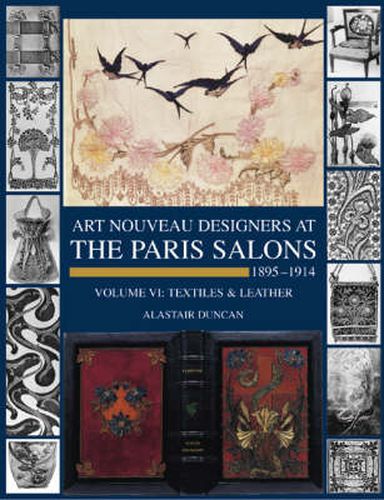Readings Newsletter
Become a Readings Member to make your shopping experience even easier.
Sign in or sign up for free!
You’re not far away from qualifying for FREE standard shipping within Australia
You’ve qualified for FREE standard shipping within Australia
The cart is loading…






The catalogues of the Paris Salons at the turn of the 19th to the 20th century provide a unique archive of illustrations of the decorative arts at a pivotal time in their development, the five previous volumes covering Jewellery, Furniture, Ceramics and Glass, and Objets d'Art. The fabric designers of the Art Nouveau style who exhibited at the Paris Salons produced a remarkable oeuvre in printed and woven fabric, silk, lace, embroidery and tapestry. Bookbinding was, and still is, a well-established French tradition, and bibliophiles commissioned unique bindings from artist-designers who, at the same time, were also creating and exhibiting non-bound leather goods - handbags, blotters, upholstery. This volume is probably the most important in the series. Because of wear and tear, practically none of the approximate 1,200 textile and leatherware pieces illustrated have survived outside museum collections or appeared at auction, unlike the items covered by the earlier volumes.
$9.00 standard shipping within Australia
FREE standard shipping within Australia for orders over $100.00
Express & International shipping calculated at checkout
The catalogues of the Paris Salons at the turn of the 19th to the 20th century provide a unique archive of illustrations of the decorative arts at a pivotal time in their development, the five previous volumes covering Jewellery, Furniture, Ceramics and Glass, and Objets d'Art. The fabric designers of the Art Nouveau style who exhibited at the Paris Salons produced a remarkable oeuvre in printed and woven fabric, silk, lace, embroidery and tapestry. Bookbinding was, and still is, a well-established French tradition, and bibliophiles commissioned unique bindings from artist-designers who, at the same time, were also creating and exhibiting non-bound leather goods - handbags, blotters, upholstery. This volume is probably the most important in the series. Because of wear and tear, practically none of the approximate 1,200 textile and leatherware pieces illustrated have survived outside museum collections or appeared at auction, unlike the items covered by the earlier volumes.